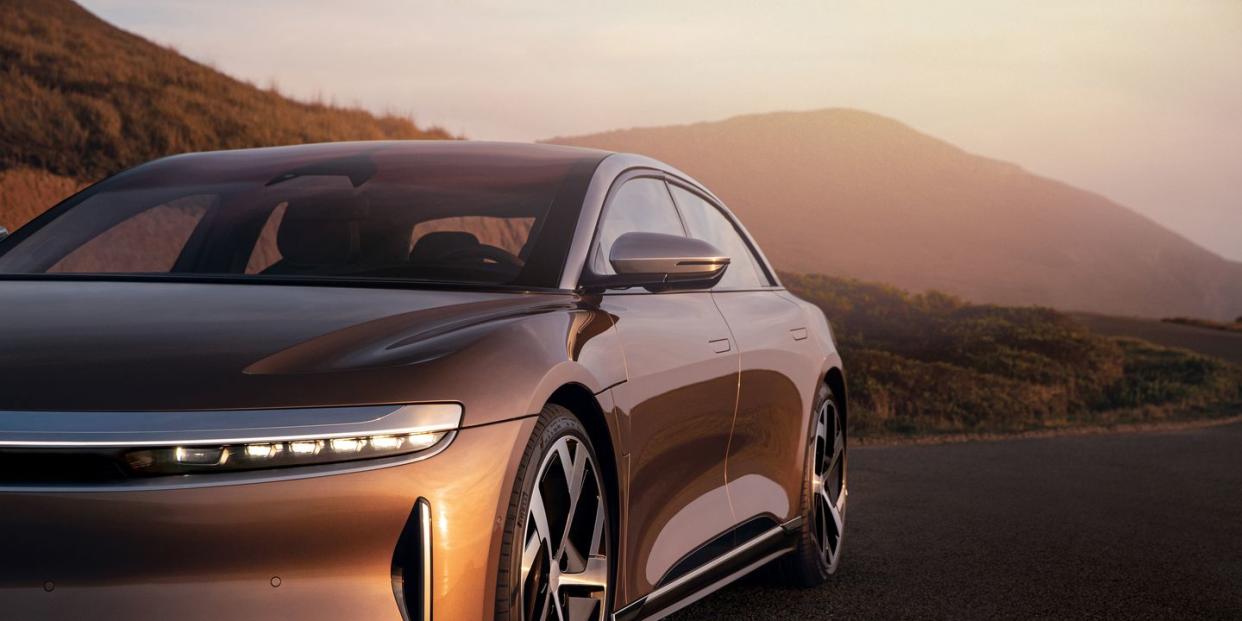This Week in Cars: Tesla, Lucid, VW ID.4, and California Dreams

In which we all talk a lot about EVs even though no one is really buying them.
Another week, another seven dollars. Unless you’re Elon Musk, in which case the saying goes: Another week, another multi-billion-dollar loss in stock valuation. It’s hard to say whether the news in the world at large has gotten worse in the last week, but it certainly hasn’t gotten better. In the automotive sector, though, things are largely continuing apace. Except that continuing apace means more electric vehicles than it used to. Here are the details.
Lowering Expectations
Tesla held its highly anticipated Battery Day event and shareholder conference this week. Tesla-watchers hoped the event would include an announcement of the company’s much-hinted-at million-mile battery, or the promise of cheaper battery technology that would allow the company to either build cheaper cars. Instead, Musk told investors that the company’s planned battery improvements would not be ready for production for another year, and that a more affordable $25,000 EV was at least three years down the line. He is also famous for missing deadlines. Investors were not impressed, and Tesla’s stock suffered a serious drop for the second time this month (the first was when the S&P 500 declined to include the company in its index).
This week in New Cars
There’s even more trouble on the horizon for Tesla in the form of the electric luxury sedan that EV carmaker Lucid unveiled this week, the Air Dream, which claims 503 miles of range. Lucid says it will hit the market in 2021. If you thought Elon was going to take that lying down, you’re wrong. He’s taking it as just the excuse he needed to finally release the Model S Plaid edition, which promises 1100 horsepower and a zero-to-60 mph time of under 2.0 seconds. Careful readers of Car and Driver magazine will know that it has been mere weeks since we said that the first sub-2.0-second car would probably hit the market around 2025. That’s exactly why we normally leave the predictions to Miss Cleo.
Volkswagen unveiled its own EV this week, the ID.4, a 201-hp rear-drive crossover. If you still require automobiles that have cylinders and belch carbon emissions, fear not. Kia debuted a new Sorento this week and BMW released the first images of the M3 and M4. They’re firmly in the Civic Type R school of excess in automotive design, but for 503 hp and a standard six-speed manual transmission we’re sure we could rig up a paper-bag grille cover that would allow us to drive them in peace. They are not, as our colleague Ezra Dyer would put it, Dad Spec.
Next Decade in Cars
Remember in 1990 when California mandated that two percent of all vehicle sales in that state be of zero emissions vehicles (ZEVs) by 1998? No? Well, it happened. And California is trying again, this time with a bigger goal and a longer deadline.
California governor Gavin Newsom announced this week a pledge to ban the sale of combustion-engine passenger cars in the state by 2035. Of course, Newsom will no longer be governor of California in 2035 and so will lack the authority to carry out this ban. But if (big if) the pledge has the intended effect of encouraging more Californians to buy EVs, it could have an impact on the American auto industry at large: California represents 11 percent of US car market, and where it goes, smaller states often follow.
Finally
What's the best car for creativity? C/D columnist Elana Scherr has thoughts.
You Might Also Like

 Yahoo News
Yahoo News 
